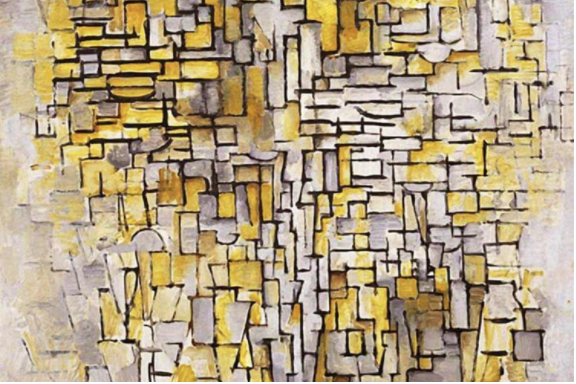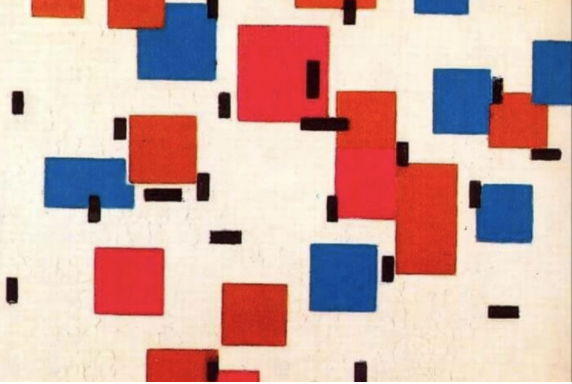ART HISTORY LECTURE SERIES - MONDRIAN THE MODERNISTA Five-Part Lecture Series Celebrating the 150th Birthday of the Artist
presented by VICTORIA MARTINO.
Join art historian Victoria Martino, as she honors the legendary “father of modernism,” Piet Mondrian, in a five- week lecture series, commemorating the 150th birthday of the artist. Heir to the venerated Dutch landscape tradition, Mondrian became a pioneer of abstract art, and a leading exponent of the Dutch avant-garde movement, De Stijl (The Style). His lifelong search for absolute purity of form, color, and line reflected his deeply held spiritual belief in a balanced and harmonious universe.
TUESDAYS 6:30PM - 8:00PMFEBRUARY 8, 15, 22 MARCH 1, 8
TICKETS Series: $70 members / $95 nonmembers Individual: $16 members / $21 nonmembers
Harvard Alumni will receive member pricing.
Tickets purchased online are subject to ticketing fees.
The lectures will be livestreamed via Zoom Webinar. Following each lecure, ticket holders will have 48-hours access to the recording.
For more information and to order tickets, contact the Athenaeum at 858-454-5872, http://ljathenaeum.org/art-history-lectures or http://www.victoriamartino.com/.
Athenaeum Music & Arts Library 1008 Wall Street, La Jolla, CA 92037
ART HISTORY LECTURE SERIESMONDRIAN THE MODERNIST
A Five-Part Lecture Series Celebrating the 150th Birthday of the Artist
presented by VICTORIA MARTINO
2/8 > Part 1 - NETHERLANDS (1872-1911): Beginnings and Awakenings
Born into a devout Calvinist family in central Holland, Pieter Cornelis Mondriaan, Jr. was encouraged by his family to draw and paint from early childhood. In 1892, he enrolled in the Royal Academy of Visual Arts in Amsterdam, where his academic training focused on drawing from the model, copying the Old Masters, and genre painting. He supported himself by making scientific drawings, producing copies of museum paintings, and giving private drawing lessons in his studio.
2/15 > Part 2 - PARIS (1911-1914): Experimentation and Integration
In 1911, Mondriaan visited the Moderne Kunstkring exhibition in Amsterdam. He was so impressed by the avant-garde work of the Cubists, that he immediately resolved to move to Paris. Upon arrival, he changed his name, dropping an “a” from “Mondriaan,” as a symbol of his complete immersion into a new culture and society. Experimenting with the style of Picasso and Braque, Mondrian found a way to integrate representational form and geometric abstraction in his work.
2/22 > Part 3 - NETHERLANDS (1914-1918): De Stijl and Neoplasticism
In the summer of 1914, Mondrian returned to the Netherlands to visit his father, who was seriously ill. The outbreak of World War I prevented him from returning to Paris, so he settled in the avant-garde artists’ colony of Laren, where he met Bart van der Leck and Theo van Doesburg. With Van Doesburg, Mondrian founded the journal, De Stijl (The Style), in which he published essays defining his artistic theory, which he named Neoplasticism.
3/1 > Part 4 - PARIS (1918-1938): Innovation and Determination
Although he returned to Paris at the end of the war, Mondrian continued his close collaboration with the artists of De Stijl. The 1920 publication of his booklet, Le Néo-plasticisme, served to disseminate his new theories throughout Europe. In the course of the years that followed, Mondrian’s artistic innovation led to the development of a unique pictorial language. Ever pursuing pure abstraction, he became affiliated with the international art associations, Cercle et Carré and Abstraction-Création.
3/8 > Part 5 - LONDON AND NEW YORK (1938-1944): Broadway Boogie-Woogie and Victory
In 1938, with war on the horizon, Mondrian decided to move to London. There he was welcomed by the Circle group, which had published his first essay in English, Plastic Art and Pure Plastic Art. The bombardment of London led him to flee to New York City, where he was received with enthusiasm by artists and collectors. Invigorated by the vibrant energy of the city, he worked tirelessly, until his death from pneumonia in 1944.ABOUT VICTORIA MARTINO
Victoria Martino is a magna cum laude graduate of Harvard University and the University of California. A specialist in European modernism, she has written and lectured extensively on artists of the early 20th century, including (among others) Ernst Ludwig Kirchner, Paul Klee, Wassily Kandinsky, Arnold Schoenberg, and the German avant- garde periodical PAN. She has curated numerous museum exhibitions in Europe and the United States and has published over 60 catalogue essays and scholarly articles. Ms. Martino has been a guest professor at universities in Australia and the United States, and she has participated in international scholarly symposia. A professional art critic, she has published exhibition reviews in THE Magazine, New York Arts, The Berkshire Review for the Arts, The Huffington Post, and many European journals.






